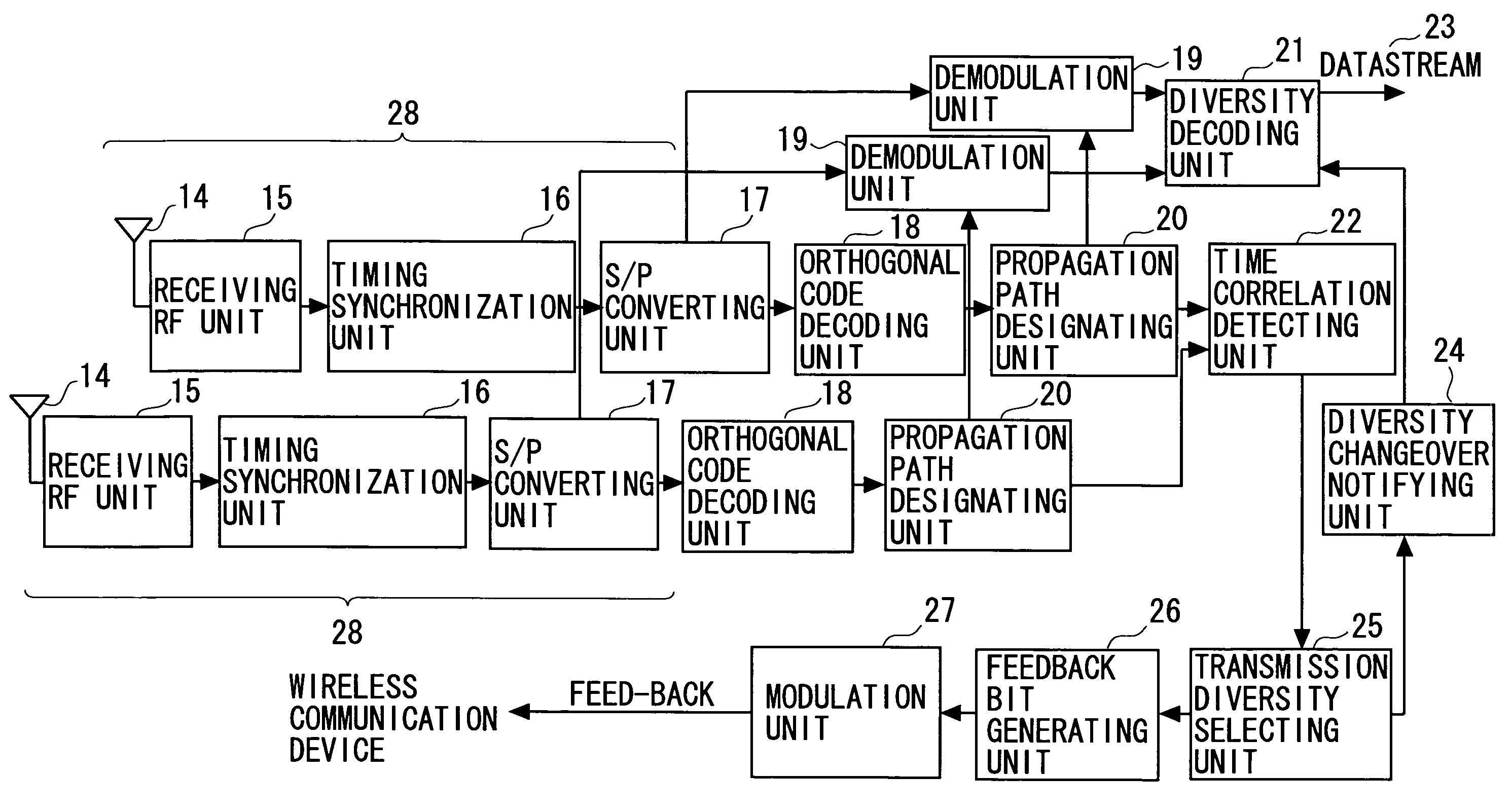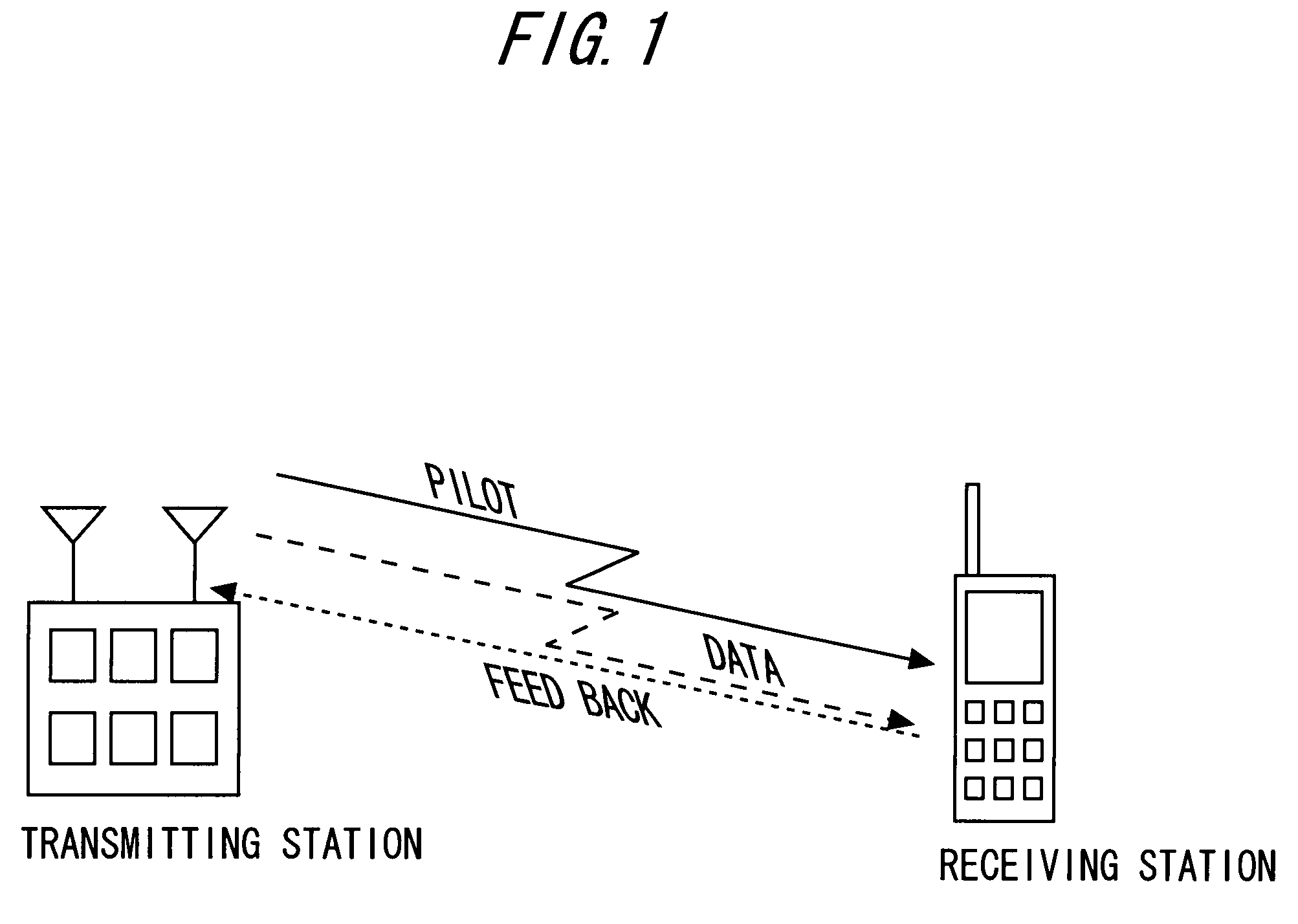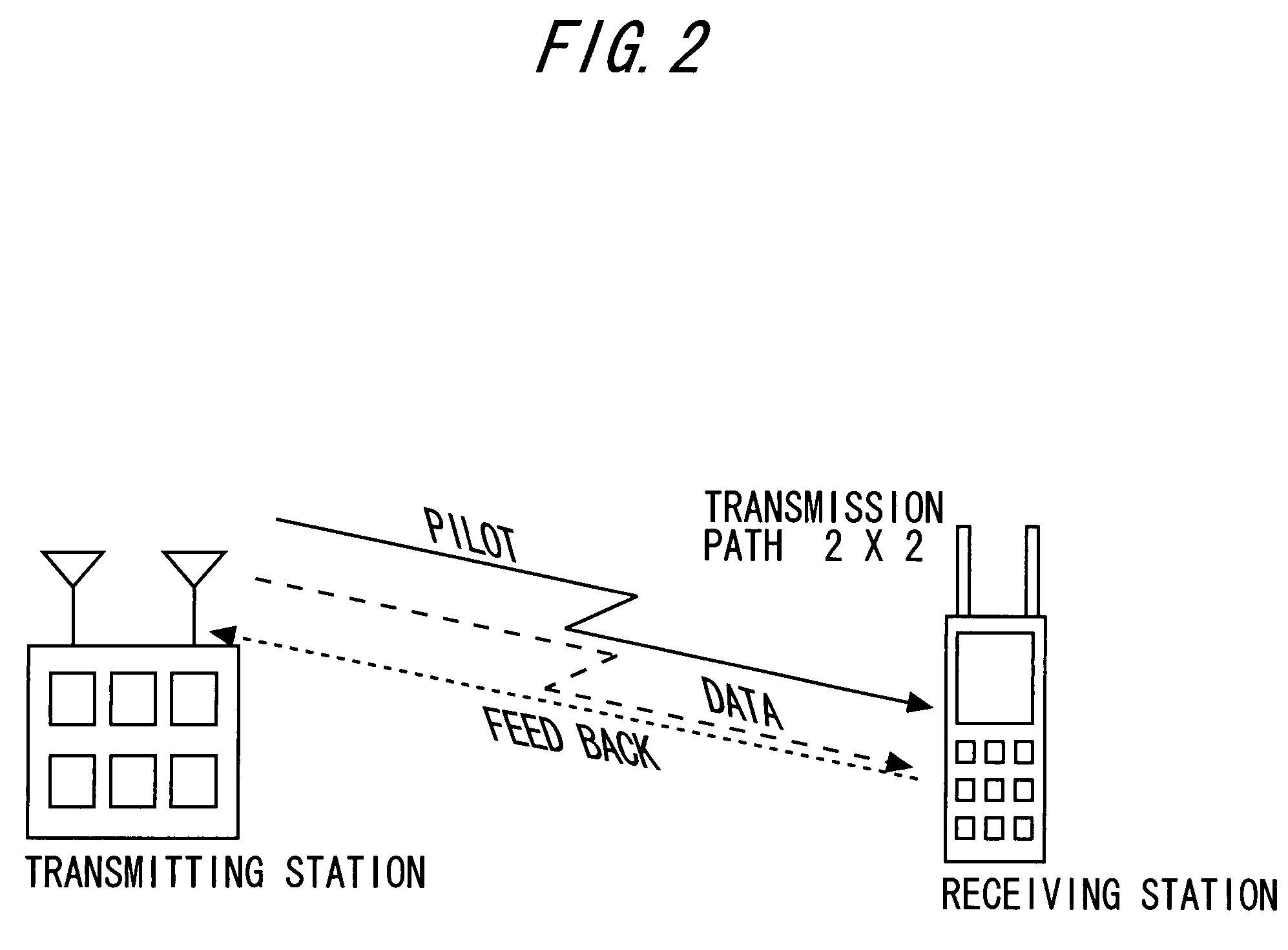Communication device and communication method
a communication device and wireless technology, applied in the direction of pulse technique, electromagnetic wave modulation, synchronisation signal speed/phase control, etc., can solve the problems of inability to acquire diversity, performance decline, and a considerable period of time, and achieve the effect of preferable communication
- Summary
- Abstract
- Description
- Claims
- Application Information
AI Technical Summary
Benefits of technology
Problems solved by technology
Method used
Image
Examples
working examples
[0203]
[0204]The five working examples of the embodiment of the receiving-side wireless communication device will be described. Before explaining the receiving-side wireless communication device, one working example of the transmitting-side wireless communication device will be described with reference to a processing flowchart shown in FIG. 23.
[0205]Note that the demodulation unit 2, the bit determining unit 3, the diversity method designating unit 4 and the STBC-or-time diversity encoding unit 5 illustrated in FIG. 8 can be realized as a program on a CPU (Central Processing Unit) or a DSP (Digital Signal Processor). Part of these components may also be configured by dedicated arithmetic circuits.
[0206]The diversity changeover process executed by the transmitting unit in FIG. 8 will be explained with reference to FIG. 23.
[0207]FIG. 23 is a flowchart of the diversity changeover process by the transmitting unit. In this process, at first, the feedback information received from the par...
first working example
[0209]A first working example corresponds a working example when applying the formula (1) of the system principle in the case of the communication device based on the MISO architecture and a working example when applying the formula (12) of the system principle in the case of the communication device based on the MIMO architecture, respectively.
[0210]The first working example of the receiving unit will be described with reference to a flowchart shown in FIG. 11.
[0211]It should be noted that the propagation path estimating unit 20, the diversity decoding unit 21, the time correlation detecting unit 22, the diversity changeover notifying unit 24, the transmission diversity selecting unit 25, the feedback bit generating unit 26 and the modulation unit 27 in FIG. 10 can be realized as a program on the CPU (Central Processing Unit) or the DSP (Digital Signal Processor). Part of these components may be, however, built up by dedicated arithmetic circuits.
[0212]FIG. 11 is a flowchart of the...
second working example
[0215]A second working example corresponds a working example when applying the formula (9) of the system principle in the case of the communication device based on the MISO architecture and a working example when applying the formula (13) of the system principle in the case of the communication device based on the MIMO architecture, respectively.
[0216]The second working example will be described with reference to a flowchart, shown in FIG. 12, of the processing by the receiving unit. In FIG. 12, the same processes as those described in the first working example are marked with the same reference symbols as those in FIG. 11, and their explanations are omitted. The second working example is different from the first working example, wherein steps S2 and S3 are replaced by steps S2A and S3A.
[0217]The following are processes in steps S2A and S3A. In the case of the MISO architecture, the time correlation detecting unit 22 calculates the time correlations of the received signals from the ...
PUM
 Login to View More
Login to View More Abstract
Description
Claims
Application Information
 Login to View More
Login to View More - R&D
- Intellectual Property
- Life Sciences
- Materials
- Tech Scout
- Unparalleled Data Quality
- Higher Quality Content
- 60% Fewer Hallucinations
Browse by: Latest US Patents, China's latest patents, Technical Efficacy Thesaurus, Application Domain, Technology Topic, Popular Technical Reports.
© 2025 PatSnap. All rights reserved.Legal|Privacy policy|Modern Slavery Act Transparency Statement|Sitemap|About US| Contact US: help@patsnap.com



